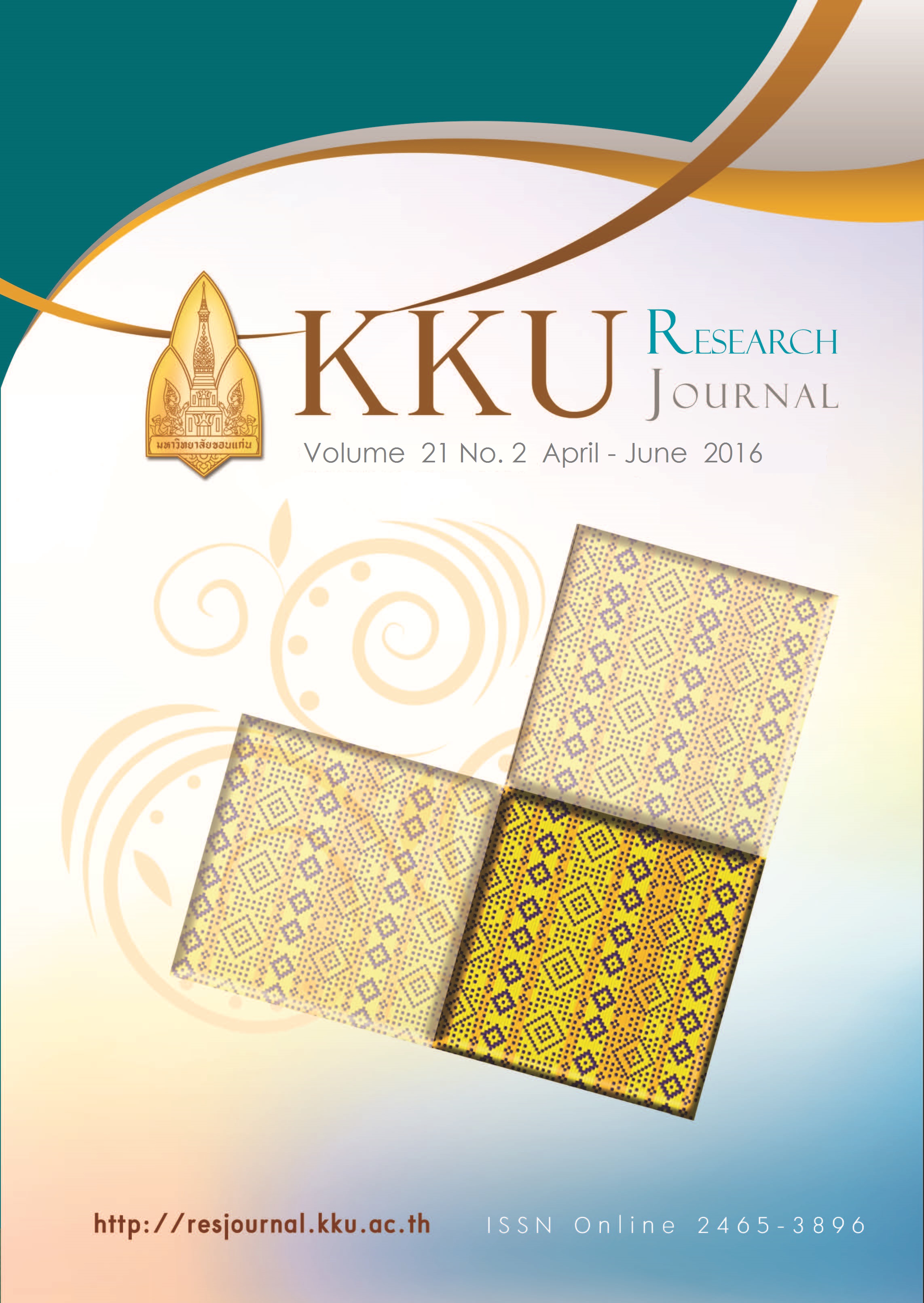Effect of nitrogen source on ethanol production from weeds by a simultaneous saccharification and fermentation process
Main Article Content
Abstract
The effect of nitrogen source on ethanol production from 2 weeds, small-flowered umbrella sedge (Cyperus difformis) and cattail (Typha angustifolia), was studied. It was performed through a simultaneous saccharification and fermentation (SSF) process using the ethanol-producing yeast Saccharomyces cerevisiae TISTR5339. Both lignocellulosic materials were pretreated by steam explosion at 198oC for 5 minutes then steam exploded pulp was hydrolyzed with Cellic CTec2 (25 FPU/g) to obtain glucose. Different nitrogen sources; ammonium nitrate, ammonium chloride, ammonium sulfate, urea and peptone,
were varied under a control fermentation condition. The result showed that the optimal nitrogen source for ethanol production from small-flowered umbrella sedge was peptone with ethanol yield 71.5% and ethanol productivity 0.27 gl-1h-1. Ammonium nitrate was found as an optimal nitrogen source for ethanol production from cattail with ethanol yield 39.6% and ethanol productivity 0.11 gl-1h-1.
Article Details
References
[2] Nelson, M. A photometric adaptation of the Somogyi method for the determination of glucose. J. Biol. Chem. 1944; 153:375-380.
[3] Somogyi, M. Note on sugar determination. J. Biol. Chem. 1952; 195: 19-23.
[4] Barcelos, C. A., Maeda, R. N., Betancur , G. J. V. and Pereira, N . Jr. Ethanol production from Sorghum grains [Sorghum bicolor (L.) Moench]:Evaluation of the enzymatic Hydrolysis and the hydrolysate fermentability. Braz. J. Chem. Eng. 2011; 28: 597-604.
[5] Laopaiboon, L., Nuanpeng, S., Srinophakun, P., Klanrit, P. and Laopaiboon, P. Ethanol production from sweet sorghum juice using very high gravity technology: Effects of carbon and nitrogen supplementations. Bioresour. Technol. 2009; 100: 4176-4182.
[6] Jones, A.M. and Ingledew, W.M. Fuel alcohol production: Appraisal of nitrogenous yeast foods for very high gravity wheat mash fermentation. Process Biochem. 1994; 29: 483–488.
[7] Thomas, K.C. and Ingledew, W.M. Production of 21% (v/v) ethanol by fermentation of very high gravity (VHG) wheat mashes. J. Ind. Microbiol. Biotechnol. 1992; 10: 61-68.
[8] D’Amore, T., Panchal J.C., Russell I. and Stewart G.G. Osmotic pressure effects and intracellular accumulation of ethanol in yeast during fermentation. J. Ind. Microbiol. Biotechnol. 1988; 2: 365-372.

